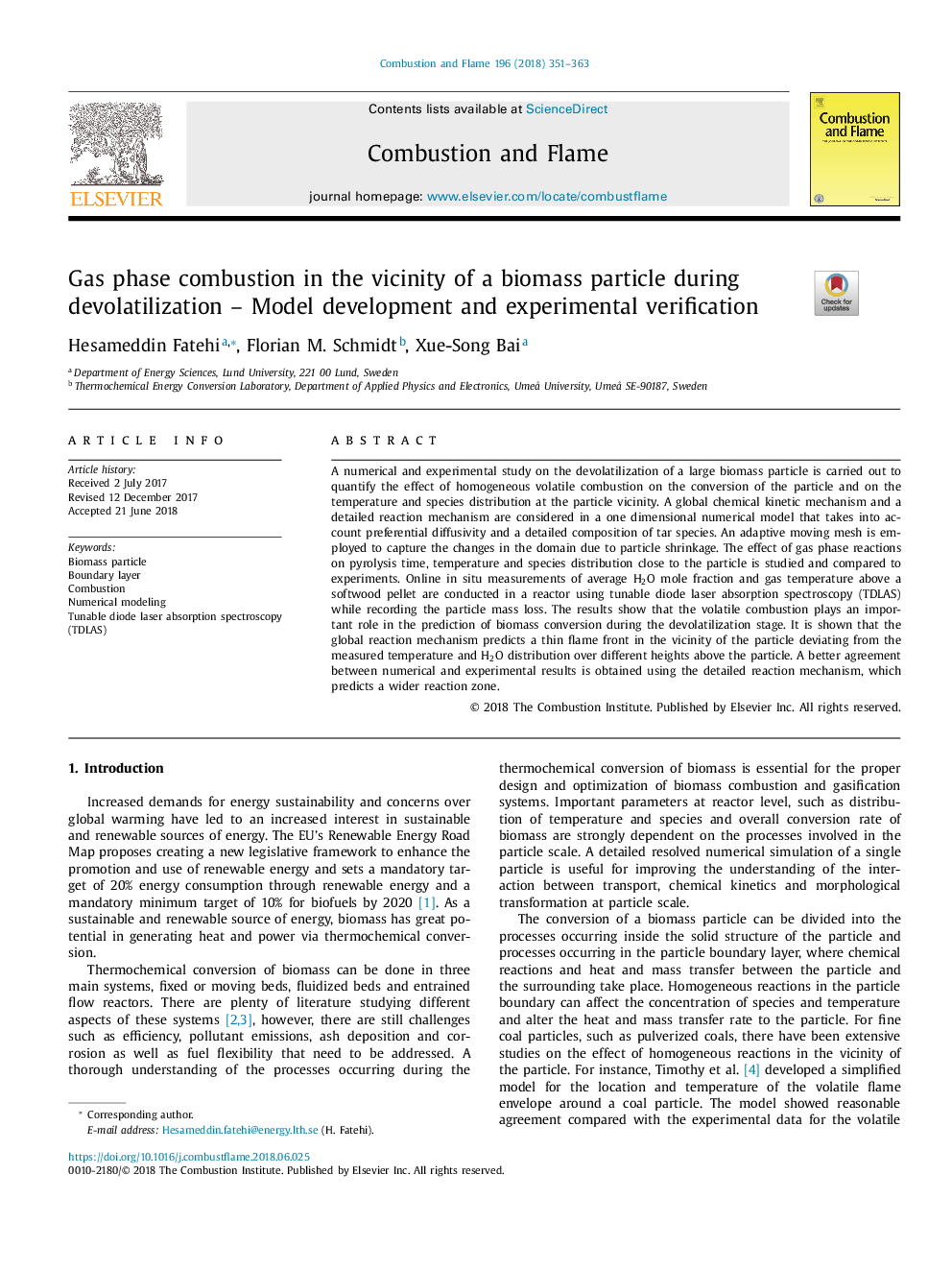| Article ID | Journal | Published Year | Pages | File Type |
|---|---|---|---|---|
| 6593381 | Combustion and Flame | 2018 | 13 Pages |
Abstract
A numerical and experimental study on the devolatilization of a large biomass particle is carried out to quantify the effect of homogeneous volatile combustion on the conversion of the particle and on the temperature and species distribution at the particle vicinity. A global chemical kinetic mechanism and a detailed reaction mechanism are considered in a one dimensional numerical model that takes into account preferential diffusivity and a detailed composition of tar species. An adaptive moving mesh is employed to capture the changes in the domain due to particle shrinkage. The effect of gas phase reactions on pyrolysis time, temperature and species distribution close to the particle is studied and compared to experiments. Online in situ measurements of average H2O mole fraction and gas temperature above a softwood pellet are conducted in a reactor using tunable diode laser absorption spectroscopy (TDLAS) while recording the particle mass loss. The results show that the volatile combustion plays an important role in the prediction of biomass conversion during the devolatilization stage. It is shown that the global reaction mechanism predicts a thin flame front in the vicinity of the particle deviating from the measured temperature and H2O distribution over different heights above the particle. A better agreement between numerical and experimental results is obtained using the detailed reaction mechanism, which predicts a wider reaction zone.
Keywords
Related Topics
Physical Sciences and Engineering
Chemical Engineering
Chemical Engineering (General)
Authors
Hesameddin Fatehi, Florian M. Schmidt, Xue-Song Bai,
